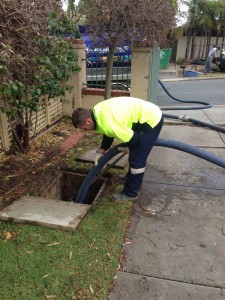
Many property owners might not give a second thought to the waste that flows down the drains in their houses. However, this ignorance could be costly if you’re relying on a septic system for treating and disposing of wastewater in your house.
For instance, a fault in your septic system could result in the contamination of your groundwater supplies by several harmful microorganisms. This in turn, could cause severe outbreaks of diseases such as hepatitis, typhoid, dysentery etc. This is why areas that use septic systems pay a great deal of attention to the proper care and maintenance of these systems.
What is a Septic Tank?
Septic tanks are an essential component of septic sewage treatment systems. These systems are ideal for use in rural and country areas. You will come across these in areas that have no connections to the main sewage pipes and drains. Some of the locations of Septic tanks in the northern areas of South Australia are Mallala, Lewiston, Gawler, Two Wells, Virginia and Angle Vale. You will also find septic systems working along the coastal areas along the Fleurieu Peninsula including the towns of Victor Harbour, Yankalilla, Port Eliot and Goolwa. Every house from Mount Compass to Meadows to Mount Barker to Williamstown and throughout the Adelaide Hills region all rely upon an efficient and working septic tank to treat household effluent. It is good to know that Nitschke Liquid Waste specialise in servicing all of these locations.
The term ‘septic’ denotes the anaerobic bacterial environment that tends to develop within septic tanks. This bacterial environment is useful in decomposing or mineralising the solid and liquid waste discharged into the tank.
Septic treatment systems usually require large drain fields. This is why they remain inherently unsuitable for areas with a high population density. Septic tanks usually come in a range of sizes. The size of a tank would usually depend on the number of people living within the property.
What Do Septic Tanks Look Like?
Septic tanks usually comprise one or more concrete or plastic tanks. Each tank has a storage capacity of about 4,000 to 7,500 litres. Each septic tank will usually have two connections. The first will connect the tank to an inlet wastewater pipe, while the second will connect the tank to a septic drain field.
People usually use a T-pipe for making these pipeline connections. This enables the liquid to enter and exit the tank without disturbing any crust on the surface. Some contemporary septic tanks come with two chambers separated by a dividing wall. This dividing wall has openings placed midway between the floor and the roof of the tank. In addition, each of the chambers also has a manhole cover for keeping the waste secure.
How Do Septic Tanks Typically Work?
Wastewater from the property enters the first chamber of the tank. In this chamber, the heavier solids tend to settle at the bottom of the tank. At the same time, the scum floats at the top of the tank. Over time, the anaerobic bacterial environment present in the tank breaks down and digests the settled solids. As a result, the volume of solids present in the tank keeps decreasing.
In the meantime, the liquid waste flows into the second chamber through the dividing wall. Here too, the settlement of the waste continues to take place. Eventually, the excess liquid becomes relatively clear in condition. This excess liquid starts draining from the outlet into the leach field (or drain field).
Once the excess liquid drains into the soil, the soil traps any remaining impurities and eliminates them. Thereafter, the elimination of the excess water takes place via:
- Evaporation
- Percolation into the various layers of the soil
- Transpiration (or the assimilation of water into surface or groundwater) and,
- The uptake of water by the root systems of plants and trees
It is worth noting that a properly designed and well-maintained septic system should provide years of use. As long as the septic tank cleaning takes place regularly (SA Health Guidelines recommend a service every 4 years), the entire system will remain odour free, giving decades of service.
What Happens to the Solid Waste that Does Not Decompose in the Tank?
Sometimes, you will need to remove the waste that does not decompose in the tank. Failure to do so would result in the saturation of the septic tank. Once this happens, the wastewater containing undecomposed material would discharge directly into the drainage field. This will have severe repercussions on the environment.
In addition, if the sludge happens to overflow into the leach field, it could end up clogging the leach field piping. Alternatively, it could even have a negative effect on the porosity of the soil too. In short, if you ignoring your septic tank cleaning could end up costing you several hundred dollars towards costly repairs.
Emptying a septic tank requires the use of vacuum trucks for carrying out septic tank pumping. This is useful for getting rid of the accumulated faecal sludge and excess liquid in the tank. Although South Australian SA Health guidelines recommend that all septic tanks are cleaned and pumped out every four years there is no prescribed formula for understanding how often you will need to empty your septic tank. Typically, this would depend on various factors such as:
- The volume of the tank relative to the input of solid waste matter
- The volume of indigestible solids and,
- The ambient temperature of the tank (as anaerobic digestion takes place more effectively at higher temperatures)
- Flooded or blocked up soakage areas.
Nitschke Liquid Waste – Your Reliable Septic Tank Service in South Australia
When it comes to septic tank pumping and service, Nitschke Liquid Waste is the name to trust in South Australia. We have over 20 years of experience in the domain. Our operators have a ‘can do get the job done attitude’ which are also backed up by our professional staff and wide range of service vehicles.
If your toilets and drains are taking an inordinately long time to empty or are spreading odours inside your house, it’s probably because they need emptying. Call us at 8260 7660 and get YOUR hassle-free septic tank service today.



